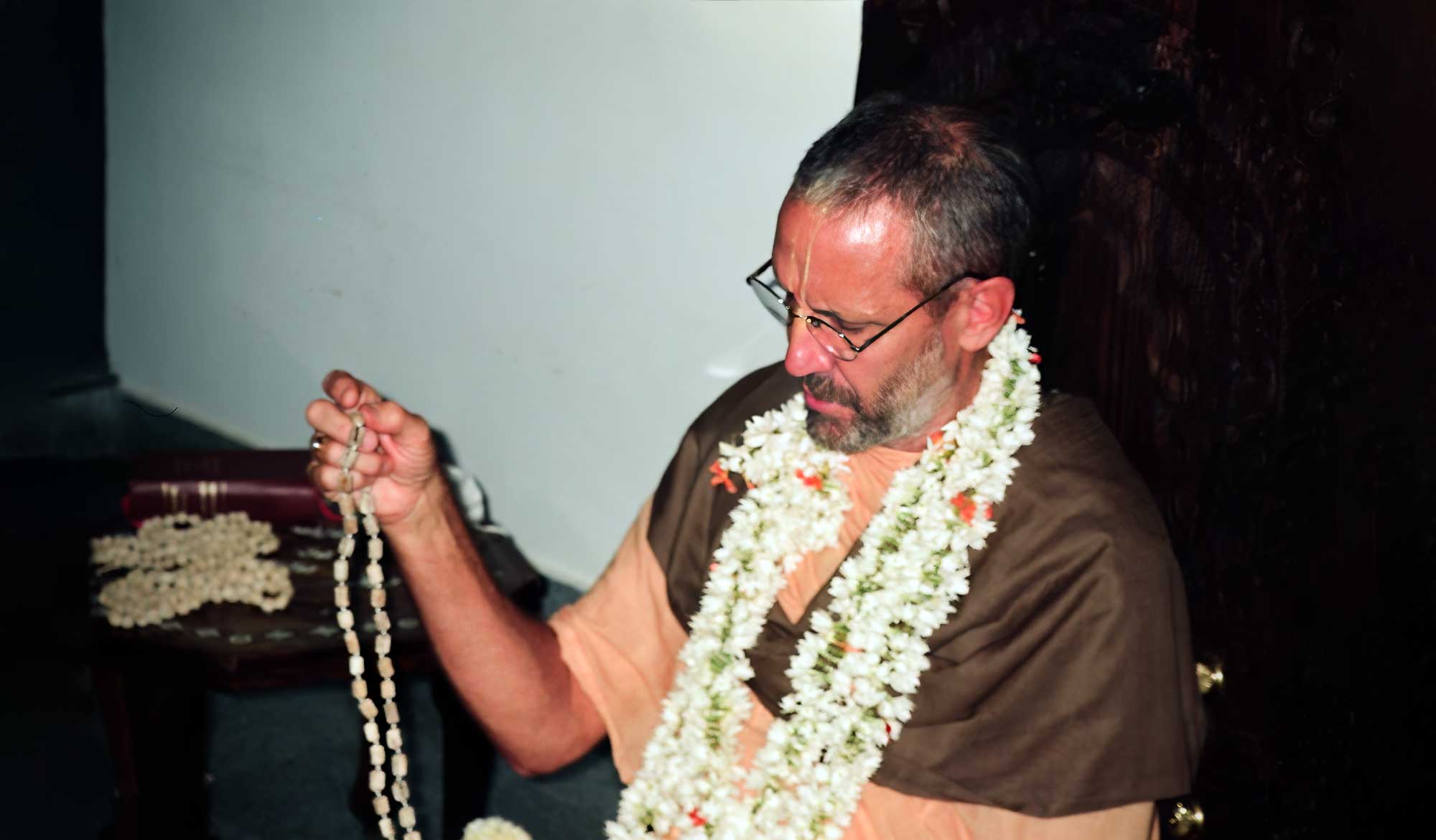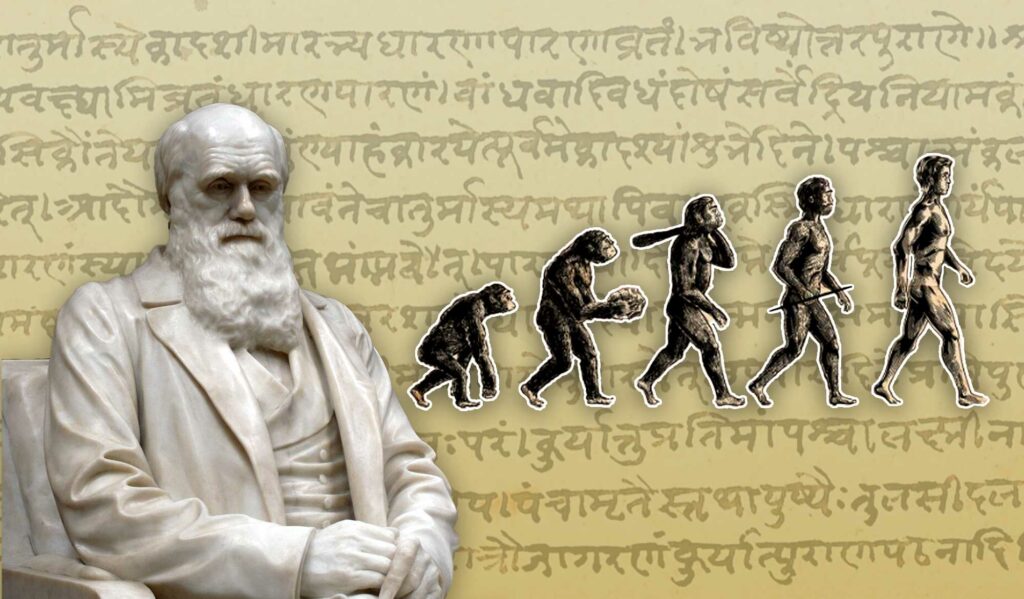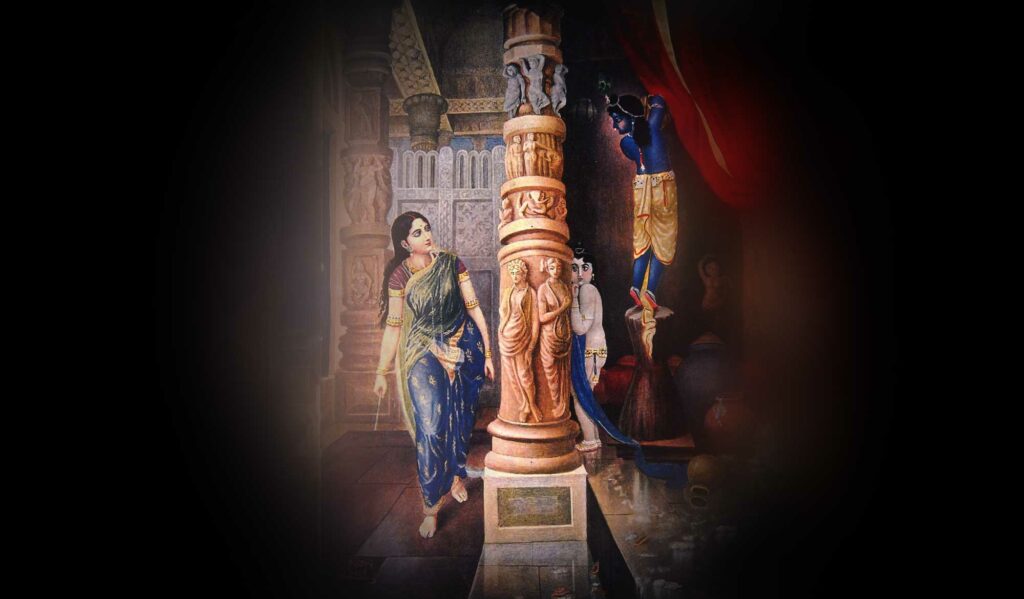Overview
The following article is based upon a letter exchange between Śrīla Narasiṅgha Mahārāja and a godbrother-guru which took place in 1998. His godbrother asks what hari-nāma initiation actually is and what transpires between the guru and disciple at that time.
Question: What actually happens at the hari-nāma initiation ceremony? Is it just a formality or is there something mystical that is transmitted at initiation beyond the commitment that the aspirant makes and the formal acceptance of that commitment by their teacher? In other words, if these devotees have committed themselves to sādhana-bhakti and have accepted the guidance of a bona-fide teacher, then what exactly are they lacking by not having it formalised by no fault of their own?
Answer: Before hari-nāma initiation, there is a period of generally six months to a year wherein the guru observes the disciple’s qualifications, and the disciple observes the guru’s qualifications. At the time of hari-nāma initiation what actually happens is that the relationship between the guru and the disciple is formally established. The disciple may accept the guru and the guru may accept the disciple before the official ceremony takes place and that is indeed the essence of the guru-disciple relationship (mutual acceptance). Śrīla Prabhupāda said, “Actually I was initiated in 1922.” This was, as we know, the first meeting between Śrīla Prabhupāda and Sarasvatī Ṭhākura wherein Prabhupāda actually accepted in his heart that Sarasvatī Ṭhākura was indeed his guru. However during the ceremony, the guru gives certain items to the disciple which he has not received thus far – namely his japa-mālā, kaṇṭhi-mālā, and his spiritual name. These are called aṅgas, or the limbs of hari-nāma initiation. In olden times, and still in certain sections of the Gauḍīya Maṭha, a new devotee does not chant on beads, wear more than two rounds of tulasī beads on the neck, or have a spiritual name until these things are given personally by the guru during the hari-nāma initiation ceremony. During the time of Ṭhākura Bhaktivinoda one did not even wear tilaka until after having received initiation — so you can see how much things have changed since then.
Nowadays, and particularly in the west, a japa-mālā and kaṇṭhi-mālā are given by the bhakta leader who in effect is acting as a ṛtvik for the guru. Then later, at the initiation ceremony, the guru again gives a japa-mālā, three or more strands of tulasī beads, and the disciple’s spiritual name. This is, in one sense, redundant because the Holy Name has already been given. The system we have today has more or less evolved as an adjustment due to the circumstances encountered while preaching Kṛṣṇa consciousness on a large scale.
There are inherent defects in this system which manifest from time to time. For example, if an uninitiated devotee receives a japa-mālā and the instruction to begin chanting sixteen rounds from the bhakta leader or temple president, but does not finally come to the position of accepting shelter at the feet of the guru (guru-pādāśraya), then very often the uninitiated devotee begins to think that such shelter is not necessary and that he/she is able to chant the Holy Name and make spiritual advancement without a guru. Thus the chanting of that individual becomes nāmāparādha.
Even for the sincere devotee, chanting before receiving guru-pādāśraya is only nāmābhāsa at best. Śuddha-nāma (or prema-nāma) can only be effected for one who has accepted shelter and instructions from a bona-fide guru. This is the opinion of Śrīla Jīva Gosvāmī in his commentary to the Śrīmad Bhāgavatam (7.5.24-25). When Jiva Gosvāmī and others refer to one’s chanting before receiving guru-pādāśraya they are not talking about chanting on a japa–mālā, but are referring to chanting in kīrtana, bhajana, or the counting of rounds on one’s fingers. As I have already mentioned, the japa-mālā is traditionally only received personally from the guru during the hari-nāma ceremony and not before. For example, have you ever heard that Śrīla Prabhupāda chanted japa before receiving initiation from Sarasvatiī Ṭhākura? No, because in those days the japa-mālā was only given at the time of receiving hari-nāma initiation. As I said previously, this system is still followed in most branches of the Gauḍīya Maṭha.
Actually, the most important thing for the disciple is to know that he has received the shelter of the guru. It is through the agency of this shelter (āśraya-tattva) that the disciple begins to realise the position of his guru — first as the representative of Kṛṣṇa, then as the direct manifestation of baladeva–tattva (Śrī Nityānanda Prabhu), then as the representative of Śrīmatī Rādhārāṇī (either as a sakhī or mañjarī) and finally the disciple realises the guru to be non-different from Śrīmatī Rādhārāṇī (Gadādhara Paṇḍita). This is only possible for those who have received shelter and therefore it is to be considered an essential point in the guru-disciple connection.
The āśraya-tattva descends from the inner circle of the Lord’s most confidential servants. That āśraya is like the sun which burns away the fog (abhāsa) which covers the pure chanting of the Holy Name. When the Holy Name is chanted purely (śuddha–nāma) the disciple also realises his own eternal position in the divine service of the Supreme Lord.
The Holy Name must be received from the lips of a pure devotee and it must be received in the subjective manner, or descending line coming down in the bona-fide paramparā. If one takes up this chanting (on one’s own) by the ascending method without receiving the Name from a realised soul, then advancement will be very troublesome. Similarly, if one has received hari–nāma from a guru who is not actually qualified, even then the disciple will find it difficult to make advancement in Kṛṣṇa consciousness. If one accepts an unqualified guru then the disciple can only advance up to the level of that particular guru and not beyond. If śikṣā from the higher Vaiṣṇava or sādhu is received however, then the disciple can progress further.
This is a practical problem which many disciples are facing today – they have accepted a guru, but unfortunately many of the gurus are themselves under various misconceptions regarding the process (siddhānta) of pure devotional service and are thus unfit to help the disciple advance in Kṛṣṇa consciousness.
Something should be mentioned concerning the interference of the institution in the guru-disciple relationship for this is indeed a significant point. The institution actually plays no part at all in the guru-disciple relationship. Guru is an autocrat and his position cannot be challenged or regulated in the eyes of a disciple by another agent (especially an agent which the disciple perceives to be antagonistic to, or envious of his guru). Guru is all in all for the disciple. Interference from outside often causes great distress for the disciple causing the disciple to lose faith (śraddhā). If śraddhā in guru does not increase to what we commonly call guru–niṣṭhā (complete faith in guru or steady faith) then no real advancement in Kṛṣṇa consciousness is achieved. If the disciple’s śraddhā is disturbed then advancement stops immediately. The process of advancement in Kṛṣṇa consciousness is based on guru–śraddhā and not on faith in any particular institution. Of course, the institution these days considers itself to be an incarnation of either Śrīla Prabhupāda or Kṛṣṇa and the institution does indeed interfere in the guru-disciple relationship, but this is simply a disturbance to both a bona-fide guru and a bona-fide disciple. The guru-disciple relationship is intrinsic and it is never established based on the opinions of mundaners.
There are indeed overlapping areas between hari–nāma and mantra–dīkṣā regarding sambandha-jñāna and svarūpa-jñāna, but in all cases, guru-pāda-āśraya is most essential. This āśraya also means a specific shelter in the line of service. Service is quite a general thing in that we see that even newcomers can perform service – but when āśraya begins, the line of service is quite defined. From guru upwards the line of service is drawn to Śrīla Rūpa Gosvāmī who is the head of our sampradāya. The service of a neophyte does not recognise the position of Śrīla Rūpa Gosvāmī in our paramparā. Without proper āśraya from an agent of Śrī Rūpa (a bona-fide guru with the proper conception), a neophyte cannot realise the meaning of, or indeed that we are rūpānugas (followers in the line of Śrī Rūpa)
In the situation that you have mentioned in your question wherein a disciple has accepted a guru but that initiation has not been ‘formalised’, in other words, they cannot receive first (what to speak of second) initiation, there is certainly no fault on the part of the aspiring disciples. However, one might say that there is certainly fault on the part of the guru for not actually giving the disciples shelter. The guru is allowing mundane considerations and interference from the institution to get in the way of the guru-disciple relationship. If the guru were to offer initiation and clear shelter to those disciples (ignoring institutional restrictions), those disciples would surely accept initiation – thus demonstrating that they do not care for social considerations (or restrictions) in their search for Śrī Kṛṣṇa. Guru is all in all for the disciple and Kṛṣṇa expects the guru to fulfil that role – so why does he hesitate? He who hesitates is lost! The duty of the guru is to always follow the absolute consideration. When there is a clash between the relative and the absolute standpoint, the relative must be left aside. Please read the chapter ‘God Consciousness vs Society Consciousness’ in Śrīla Śrīdhara Mahārāja’s book Śrī Guru and His Grace. Gaura-haribol!
Related Articles
- Śrī Guru-Tattva and the Secret of Dīkṣā by Śrīla Bhaktisiddhānta Sarasvatī Ṭhākura
- The Disciple’s Mentality by Śrīla Bhakti Pramoda Purī Gosvāmī
- My Dīkṣā and Śikṣā-Gurus by Śrīla Bhakti Gaurava Narasiṅgha Mahārāja
- Dīkṣā and Śikṣā by Śrīla Bhakti Gaurava Narasiṅgha Mahārāja
- The Vision of Guru by Śrīla Bhakti Gaurava Narasiṅgha Mahārāja
- Instructing the Guru by Śrīla Bhakti Gaurava Narasiṅgha Mahārāja
- Hari-Nāma Initiation by Śrīla Bhakti Gaurava Narasiṅgha Mahārāja
- A Letter – from Disciple to Guru
- A Second Letter – From Disciple to Guru
Further Reading
Pilgrimage with Swami Narasiṅgha – Part 7: Keśī Ghāṭa
Continuing with our pilgrimage series, this week Śrīla Narasiṅgha Mahārāja takes us to Keśī Ghāṭā where he tells us about Madhumaṅgala’s meeting with the Keśī demon, what Keśī represents, and how Śrīla Prabhupāda almost acquired Keśī Ghāṭa. Mahārāja also narrates his own experience. This article has been adapted from a number of talks and articles by Narasiṅgha Mahārāja.
Prema Dhāma Deva Stotram with the Narasiṅgha Sevaka Commentary – Verses 61-65
In verses 61 to 65 of 'Prema Dhāma Deva Stotram', Śrīla Śrīdhara Mahārāja narrates the pastime of Śrī Caitanya at Caṭaka Parvata In Purī and explains how the scriptures produced by Brahmā and Śiva are ultimately searching for the personality of Mahāprabhu who is merciful too all jīvas, no matter what their social position.
Prabhupāda Śrīla Sarasvatī Ṭhākura’s Visit to Ayodhyā
With the forthcoming observance of Śrī Rāma Navamī, we present 'Prabhupāda Śrīla Sarasvatī Ṭhākura’s Visit to Ayodhyā' written by Śrīla Bhaktisiddhānta Sarasvatī Ṭhākura Prabhupāda from The Gaudīyā magazine, Vol 3. Issue 21/ In December 1924, after visiting Benares and Prāyāga, Sarasvatī Ṭhākura visited the birth-site of Śrī Rāmācandra in Ayodhyā.
Śaraṇāgati – The Only Path to Auspiciousness
In this article, 'Śaraṇāgati - The Only Path to Auspiciousness', Dhīra Lalitā Dāsī analyses the process of śaraṇāgati (surrender) beginning with śraddhā (faith). She also discusses the role of śāstra and the Vaiṣṇava in connection with surrender.
Pilgrimage with Swami Narasiṅgha – Part 7: Keśī Ghāṭa
Continuing with our pilgrimage series, this week Śrīla Narasiṅgha Mahārāja takes us to Keśī Ghāṭā where he tells us about Madhumaṅgala’s meeting with the Keśī demon, what Keśī represents, and how Śrīla Prabhupāda almost acquired Keśī Ghāṭa. Mahārāja also narrates his own experience. This article has been adapted from a number of talks and articles by Narasiṅgha Mahārāja.
Prema Dhāma Deva Stotram with the Narasiṅgha Sevaka Commentary – Verses 61-65
In verses 61 to 65 of 'Prema Dhāma Deva Stotram', Śrīla Śrīdhara Mahārāja narrates the pastime of Śrī Caitanya at Caṭaka Parvata In Purī and explains how the scriptures produced by Brahmā and Śiva are ultimately searching for the personality of Mahāprabhu who is merciful too all jīvas, no matter what their social position.
Prabhupāda Śrīla Sarasvatī Ṭhākura’s Visit to Ayodhyā
With the forthcoming observance of Śrī Rāma Navamī, we present 'Prabhupāda Śrīla Sarasvatī Ṭhākura’s Visit to Ayodhyā' written by Śrīla Bhaktisiddhānta Sarasvatī Ṭhākura Prabhupāda from The Gaudīyā magazine, Vol 3. Issue 21/ In December 1924, after visiting Benares and Prāyāga, Sarasvatī Ṭhākura visited the birth-site of Śrī Rāmācandra in Ayodhyā.
Śaraṇāgati – The Only Path to Auspiciousness
In this article, 'Śaraṇāgati - The Only Path to Auspiciousness', Dhīra Lalitā Dāsī analyses the process of śaraṇāgati (surrender) beginning with śraddhā (faith). She also discusses the role of śāstra and the Vaiṣṇava in connection with surrender.








